Eurycleidus
Eurycleidus is an extinct genus of large-bodied rhomaleosaurid known from the Early Jurassic period (most likely earliest Hettangian stage) of the United Kingdom. It contains a single species, E. arcuatus.[1] Like other plesiosaurs, Eurycleidus probably lived on a diet of fish, using its sharp needle-like teeth to catch prey. Its shoulder bones were fairly large, indicating a powerful forward stroke for fast swimming.
| Eurycleidus | |
|---|---|
| Scientific classification | |
| Kingdom: | Animalia |
| Phylum: | Chordata |
| Class: | Reptilia |
| Superorder: | †Sauropterygia |
| Order: | †Plesiosauria |
| Family: | †Rhomaleosauridae |
| Genus: | †Eurycleidus Andrews, 1922 |
| Type species | |
| †Eurycleidus arcuatus (Owen, 1840) | |
| Synonyms | |
| |
Phylogeny
Most phylogenetic analyses find the type species of the genus, Eurycleidus arcuatus, to be a relatively basal rhomaleosaurid.[1][2][3][4] A second species, E. megacephalus (Stutchbury, 1846 [originally Rhomaleosaurus megacephalus]), was reassigned to this genus by Smith (2007).[2] However, most analyses find E. megacephalus to represent an unnamed genus, which is distinct from both Eurycleidus and Rhomaleosaurus.[3][4][5] E. megacephalus was moved to its own genus Atychodracon by Adam Smith in 2015.[6]
The cladogram below shows E. arcuatus phylogenetic position among other plesiosaurs following Benson et al. (2012).[1]
| Plesiosauria |
| ||||||||||||||||||||||||||||||||||||||||||||||||||||||||||||||||||||||||
References
- Roger B. J. Benson; Mark Evans & Patrick S. Druckenmiller (2012). "High Diversity, Low Disparity and Small Body Size in Plesiosaurs (Reptilia, Sauropterygia) from the Triassic–Jurassic Boundary". PLOS ONE. 7 (3): e31838. Bibcode:2012PLoSO...731838B. doi:10.1371/journal.pone.0031838. PMC 3306369. PMID 22438869.
- Adam S. Smith (2007). Anatomy and systematics of the Rhomaleosauridae (Sauropterygia, Plesiosauria) (Ph.D. thesis). University College Dublin.
- Adam S. Smith; Gareth J. Dyke (2008). "The skull of the giant predatory pliosaur Rhomaleosaurus cramptoni: implications for plesiosaur phylogenetics" (PDF). Naturwissenschaften. 95 (10): 975–980. Bibcode:2008NW.....95..975S. doi:10.1007/s00114-008-0402-z. PMID 18523747. S2CID 12528732.
- Hilary F. Ketchum; Roger B. J. Benson (2011). "A new pliosaurid (Sauropterygia, Plesiosauria) from the Oxford Clay Formation (Middle Jurassic, Callovian) of England: evidence for a gracile, longirostrine grade of Early-Middle Jurassic pliosaurids". Special Papers in Palaeontology. 86: 109–129. doi:10.1111/j.1475-4983.2011.01083.x (inactive 2021-01-15).CS1 maint: DOI inactive as of January 2021 (link)
- Roger B. J. Benson; Hilary F. Ketchum; Leslie F. Noè; Marcela Gómez-Pérez (2011). "New information on Hauffiosaurus (Reptilia, Plesiosauria) based on a new species from the Alum Shale Member (Lower Toarcian: Lower Jurassic) of Yorkshire, UK". Palaeontology. 54 (3): 547–571. doi:10.1111/j.1475-4983.2011.01044.x.
- Smith, Adam S. (22 April 2015). "Reassessment of 'Plesiosaurus' megacephalus (Sauropterygia: Plesiosauria) from the Triassic-Jurassic boundary, UK". Palaeontologia Electronica. 18 (1): 1–20.
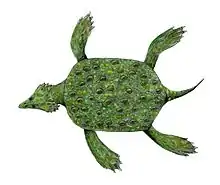
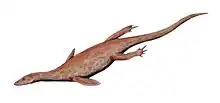
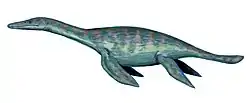

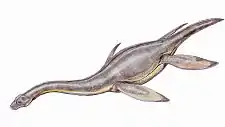
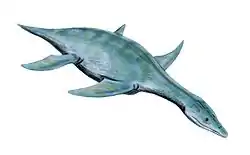
.png.webp)